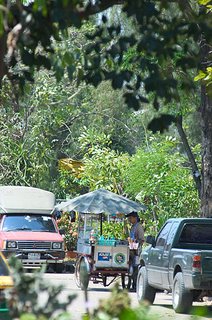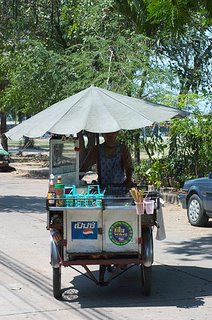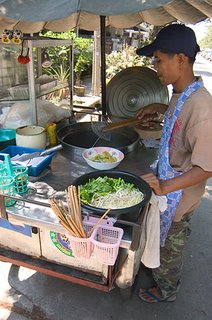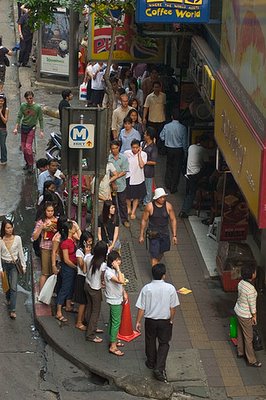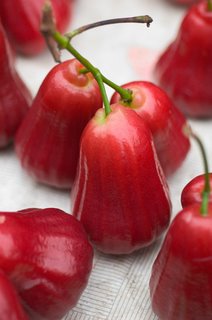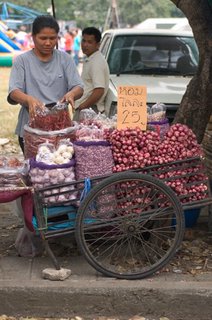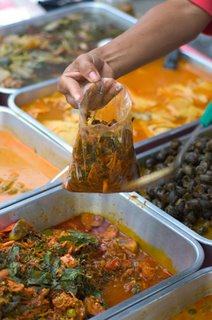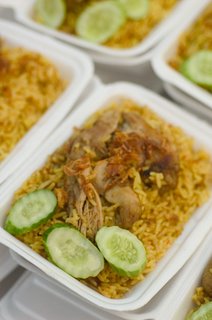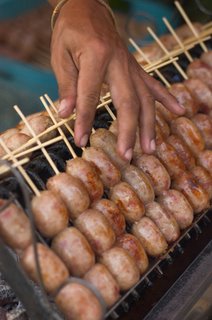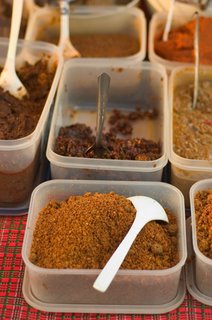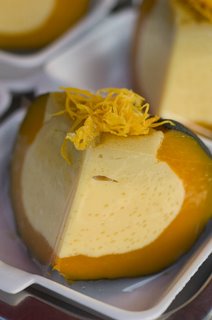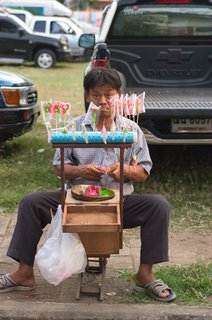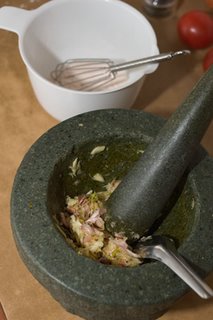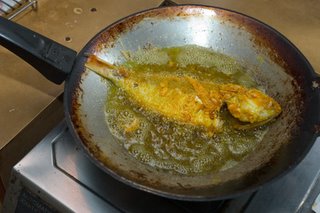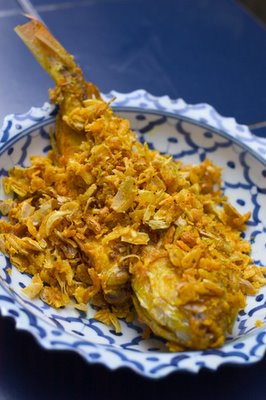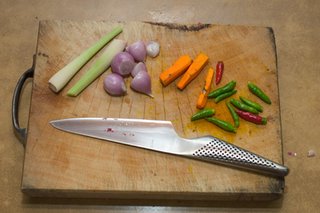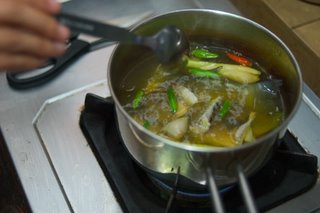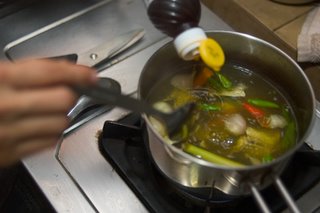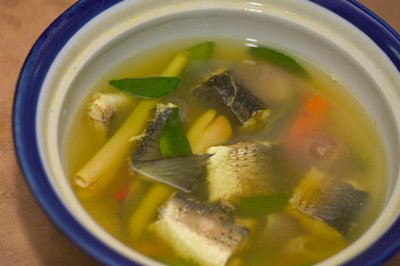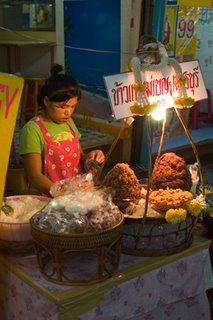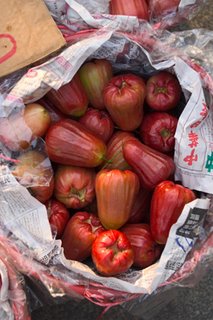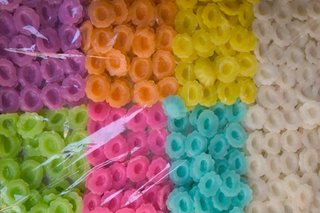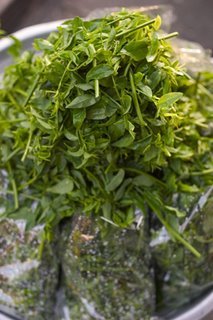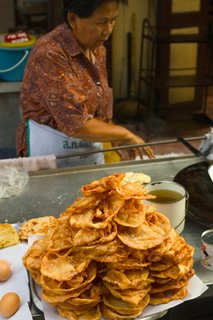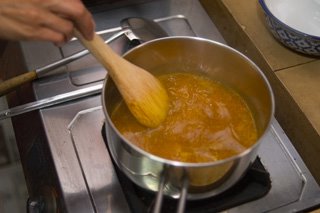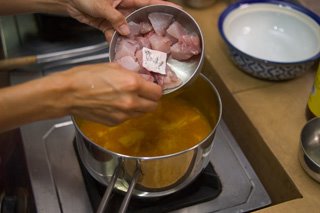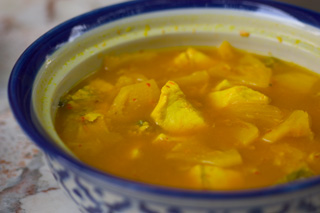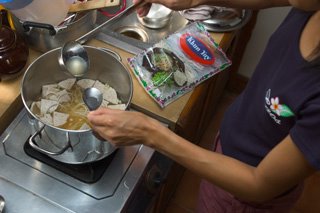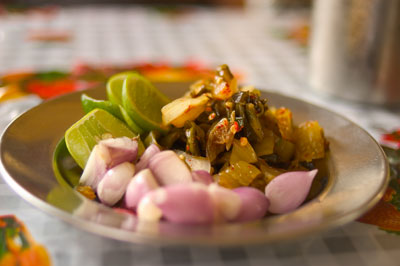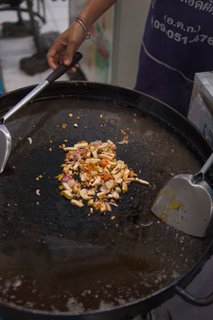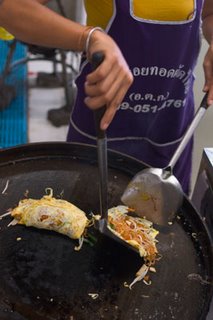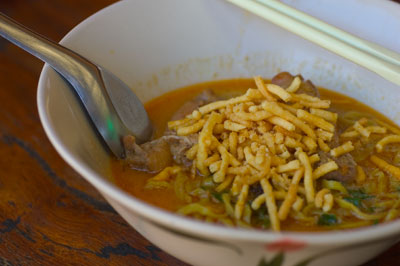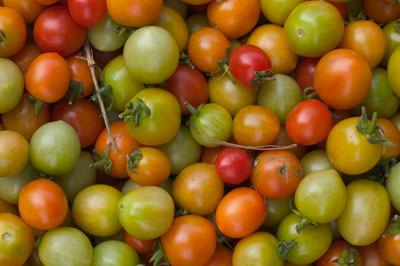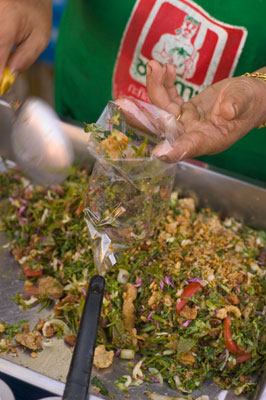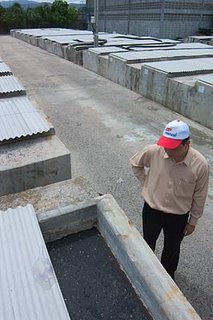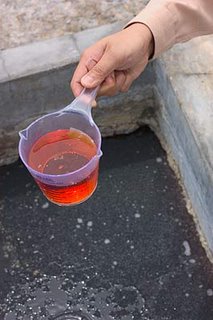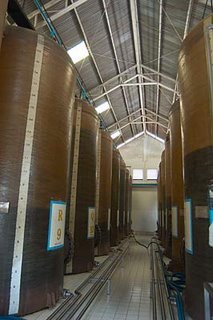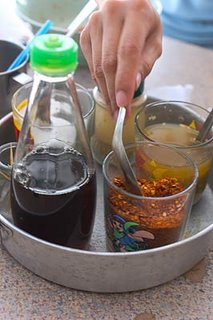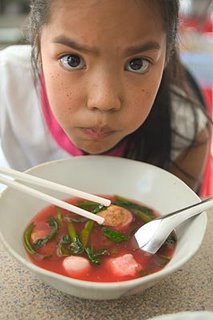Battle of the Khao Soi has spilled over into eGullet, which somehow raised concern that the whole thing is being done simply to promote my and Onigiri's respective blogs. This is false for two reasons: 1. You mean, people actually read this stuff? 2. My only goal since birth has been to crush Onigiri and prove once and for all that I possess supreme confidence in my khao soi skills and that she is nothing but a pathetic Thai wannabe wallowing in unrealistic expectations of her culinary ability in a foreign wasteland.
Khao soi is not necessarily difficult to make, but it is time consuming, as it incorporates making a curry (which involves make a curry paste), preparing a great deal of condiments, as well as noodles. Set aside an entire morning for making it (khao soi, for some reason, is never eaten at dinner in Thailand). The recipe below will make enough khao soi for two hungry people.
The khreuang kaeng, or curry paste, is the most important part of a curry. Below are the raw ingredients that will make up my khao soi curry paste:

And a list:
Cha ko (a kind of spice), shelled 1
Coriander (cilantro) seeds 2 Tbsp
Big dried chilies 4-6
Chopped ginger 1 heaping Tbsp
Chopped turmeric 1 heaping Tbsp
Shallots 9
Salt 1 Tbsp
Curry powder 2 tsp
Take each of the curry paste ingredients except for the salt and curry powder, and dry-roast individually until fragrant and browned:

Using a mortar and pestle, combine all of the curry paste ingredients until they result in a fine, thick paste:

This is a long, boring process that will inevitably send pieces of smashed chili flying directly into your eyes. The result is your curry paste. Set it aside.
Now prepare the condiments. First, the chilies in oil: take about 30 or so small dried chilies and dry-roast in the same wok until dark and fragrant but not black and burnt. Grind these up quite finely using a clean dry mortar and pestle. Using the same wok, add 1/4 cup of vegetable oil, heat until just about to smoke, then add the ground chilies and stir until fragrant, but not burnt, about one to two minutes:

Remove to a clean dry heatproof bowl and set aside to cool.
Wash, dry, and coarsely chop cilantro and green onions. Peel and chop about 10 shallots. Drain and coarsely chop the pickled mustard greens. Slice a few limes. Arrange all of these on a dish. These are your condiments:

Now it’s time for the soup. Take about a 3/4 of a cup of thick coconut milk and heat it in a saucepan over medium heat until it starts to bubble and simmer. Add the curry paste ingredients:

Continue stirring until the liquid is reduced considerably, and a film of oil has begun to form:
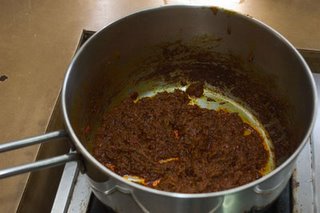
This may take as long as 10 to 15 minutes. Be patient! This is a very important step and ensures that the oils of the various ingredients will be released, making a more fragrant curry.
When a fair amount of oil has pooled, add your meat, in this case four to six small chicken thighs, and fry in the oily paste for about five minutes:

Take another half cup of thick coconut milk and dilute with about three cups of water. Add this to the saucepan:

Bring to a light boil, turn the heat down as low as possible, and simmer. After about 10 minutes or so, taste the soup and add salt or see ew khao, a kind of soy sauce, or sugar, if necessary.
While the broth is simmering, it’s time to do the noodles. Khao soi noodles, a flat squiggly egg noodle, are notoriously hard to find, even in Thailand. A good substitute is the fresh egg noodles called ba mee. Bring a large pot full of water to a boil, separate the fresh noodles, plunge into the boiling water and boil for about five minutes:

Drain well and set aside in colander (the noodles can be made in advance and quickly re-boiled at eating time, if necessary).
Put a generous serving of the noodles in a bowl, top with one chicken thigh and lotsa broth, and you’re done! How diners choose to flavor their khao soi with condiments is up to them. Personally, I like lots of lime and lots of chili:

So whaddaya got, Onigiri?
